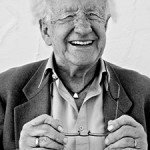Structural violence, peace and the handicapped
By Johan Galtung
From Frankfurt am Main, Caritas
How do social structures and handicaps–mental or physical, spiritual or material–relate to each other?
Answer: about the same way as social structures relate to other marginalized, even stigmatized, groups: women and non-whites, younger and older, workers, the physically and mentally ill, the handicapped, and other “deviants”. And at the world level the colonized and the imperialized, the less and the least developed countries, the pariahs.
What do they have in common? That somebody is on top of them in a hierarchy. They are different, hierarchies make them unequal, and hierarchies are strong and tend to be reborn. Those on top exclude those lower down as “deviant” from “normal”, included, society. They may even exploit them economically, use force militarily, decide over them politically, imprint their way of thinking on them culturally. Four types of power, four ways of exercising structural violence in hierarchies. Not strangely, we have had amazing revolts against such hierarchies in the last centuries under the banner of the human right to be different, yet equal. From the American revolution leaving clergy and aristocracy behind and the French beheading them via working class struggle for decent livelihood, colonies for freedom, countries to shake off capitalist or communist imperial yokes to poor countries for their share, women for parity, younger people to be taken seriously.
And age: it carries stigma as in white/gray hair, care when walking. 15 years beyond retirement age, I should be in Ruhestand, quietude, on a side-track, Abstellgleis; materially well but spiritually limited to hobbies like children to playing, excluded from the challenges of real work, for individual and social development, for new syntheses. Next stop: the cemetery. So I refused to retire, to become re-tired, tired again and again for lack of challenge; like exploring how concepts close to me may explain the hindrances, Behinderung, for handicapped.
Great advances have been made, seeing handicapped as three percent “deviant” and 97 percent “normal”. Material structures have been changed dramatically, making access for those in wheelchairs, children, the infirm and the aged so much easier, creating paths for the blind, sign languages for the deaf. However, an evened track may still be a side-track.
How about the human right to be included, to contribute? For the handicapped not only to be accepted as different–not “deviant”–yet equal in rights, but to take on the challenge of defining their own situation, and make their inputs to life and society? The blind may have rich inner visions and the deaf inner sounds; the wheel-chaired have other angles on all. White middle-aged, middle and upper class, Western, “normal” males have monopolized challenges much too long, telling others how to think. Major challenges ought to be shared.
Challenges are like sunshine, sources of health; like exercise, food and care. Look at nature: flowers and trees take roots, grow, stretch and twist for water, nutrients, fresh air, oxygen, sunshine. Deprived of that they fall ill, wilt, die. Foresters and gardeners can help, weeding, clearing. And plants and trees perform miracles with water and oxygen; photosynthesis, creating new realities.
The marginalized–merchants with no pedigree, workers exploited by merchants, non-whites, women, the younger and the older placed in ghettos, colonies, countries of the South–organize around the right to decide who they are and what they want: a place in the sun for all.
A hierarchy becomes a polyarchy, vertical, but with horizontal ties uniting workers, women, non-whites, young, old, the handicapped. Periphery countries start trading among themselves: up they come; adolescents do the same, workers start cooperatives. The handicapped will increasingly find each other, define their place in society and demand their right to shape that society, not only be shaped by well-intended others. Like nations wanting autonomy to rule themselves.
There is a price to pay: structural overload. Some may simplify to self-sufficiency in horizontal equiarchies; like South-South-South trade among the Third World continents; the younger taking off from the parents, etc. At the risk of becoming isolated. And some may even prefer individual self-sufficiency in a postmodern anarchy, with all structural tissue removed. At the risk of structural underload.
And the handicapped? The World Health Organization’s Schizophrenia Study from the 1970s showed that this major mental handicap was less frequent, less deep and less long-lasting in less developed counties. Like other “deviants” they were not institutionalized, but parts of village life to the extent they managed; some as “the village idiot”. As in more developed countries sociopaths may be kicked upstairs, these countries’ extremism is an indicative of a force bordering on the divine. And no doubt some are treated harshly, killed, banished. But their local societies are less stratified, less hierarchical, more inclusive.
“Development” from traditional villages to modern states means building hierarchies around omnipotent State logic, omnipresent Capital logic and omniscient Science logic. God’s successors all, monopolizing challenges. Not strange that many migrate to villages.
First conclusion: Handicapped of all kinds unite! You have only your “normals” to lose. Second: relate to “normal” people on as equal terms as possible. Third: take on the challenge to construct a more inclusive society where your way of being different is an enrichment, a plus.
And the fourth: use all four structures. Some hierarchy deciding what is best, monopolizing challenges, may be necessary. But organize, become strong enough to challenge. Sometimes try to manage alone as handicapped, sometimes on equal terms with “normals”. And alone. The structures do not exclude each other. Rotation may be useful. The answer to human diversity is structural diversity, consciousness about them, and the right choice at the right time for the right inclusion.
Originally published here
